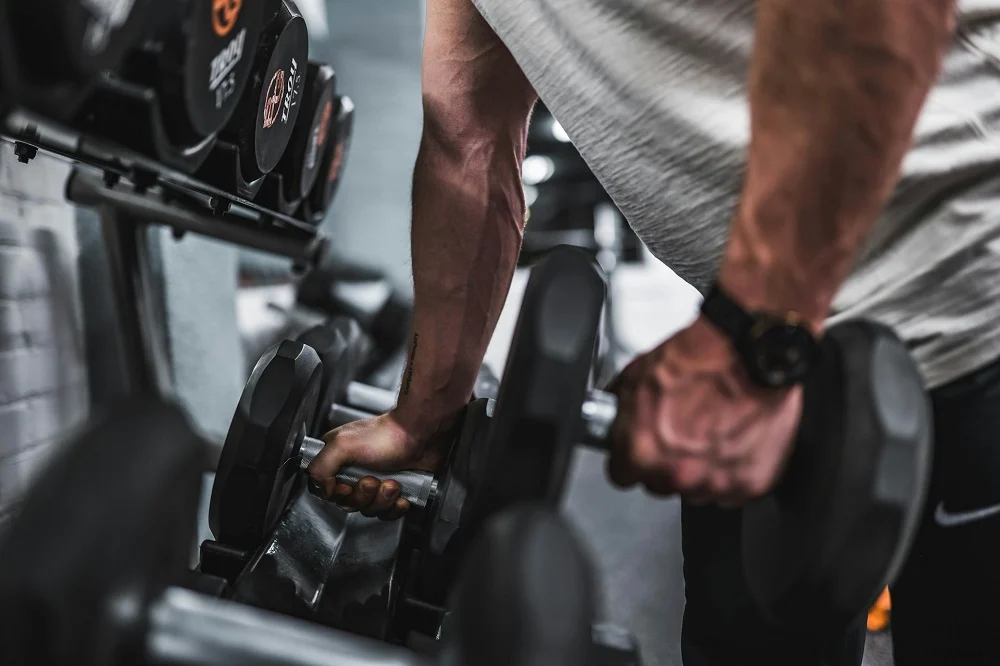Is Mind-Muscle Connection Really Effective During Exercise?
The mind-muscle connection isn’t just a spiritual thing or a cliché catchy phrase—it’s one of the most underrated training tools for improving strength and hypertrophy.
Many lifters move weights without truly feeling the muscle work, but science shows that focusing mental attention during movement can significantly amplify results.
In other words, what you think—and especially how you train yourself to feel the muscle—affects how you lift. How deep does this connection go, and how can you use it to train smarter? That’s what we are discussing further.
Mind, Muscle, and Science Connection
The mind-muscle connection describes the conscious focus on contracting a specific muscle during exercise. Instead of moving weight mechanically, you direct attention to the muscle being worked—feeling each rep from stretch to contraction.
Studies confirm that this simple shift in focus increased biceps activation by 22% compared to those using external focus (thinking about moving the weight). European Journal of Sport Science controlled focus on thinking about the target muscle, and the results were beyond what many people expected.
The brain’s motor cortex communicates directly with muscle fibers through electrical signals. Strength gains depend not only on physical adaptation but also on how efficiently the brain “recruits” motor units. The nervous system is exactly that, a system, so every piece has a task at hand. Focusing on mind-muscle connection is like supervising that every piece is doing what it should do.
Action step: Before your workout, visualize the exercise. Imagine the muscle contracting, the range of motion, and the tension. It primes your nervous system for better performance.
From Mental Power to Muscle Power
Furthermore, the famous paper “From Mental Power to Muscle Power—Gaining Strength by Using the Mind,” published in Neuropsychologia, demonstrated that mental training alone—without lifting weights—can increase strength by up to 13.5%.
We could say that this concept goes beyond muscles—it’s part of a broader mind-body connection. Neuroscientists often refer to this as the interaction between the central nervous system and the peripheral body through signals that regulate movement, emotion, and focus.
Polyvagal Theory and Muscle Control
According to polyvagal theory, the autonomic nervous system has pathways that regulate not only emotional states but also physical readiness. When you’re calm and present, your vagus nerve optimizes heart rate and muscle coordination. If you train while distracted or anxious, your nervous system prioritizes defense, not performance.
Thus, mind-muscle connection, internal focus, or thinking about the target muscle gives more work to the brain. It has less time to think about how hot it is, how many sets are left, or if you should have Chinese for dinner.
Possible Positive Psychology Effects
Research in positive psychology suggests that emotional engagement improves performance in the physical tasks at hand. Feeling motivated and connected to your body enhances proprioception—the sense of where your limbs are in space—leading to better technique and reduced injury risk.
Positive self-talk has also been proven to be another powerful tool in this regard, since it can be instructional and also motivational.

How to Build a Stronger Mind-Muscle Connection
As we have seen, automation is the enemy. So, it makes sense that the first step to building a great connection between mind and muscle is to slow things down.
1. Slow Down Every Rep
Rushing through movements reduces muscle activation. Slower tempos increase time under tension and neural feedback. For example, lowering the weight in three seconds and contracting deliberately improves activation and control.
Action step: Try a 3-second eccentric phase on your next exercise to enhance awareness of muscle tension.
2. Use Light to Moderate Weight
Using moderate weights allows better sensory feedback and higher-quality contractions, but at the same time, the exercise needs to be challenging. Heavy loads often shift focus toward completing the rep instead of feeling the muscle.
Action step: Choose 60–70% of your 1RM; that’s enough resistance to feel challenged but not distracted by strain.
3. Practice Isolation Before Compound Moves
Isolation exercises (like cable flyes or leg extensions) help “wake up” a muscle before complex lifts. This neurological priming improves recruitment during multi-joint exercises such as squats or presses.
Action step: Add one light isolation set before a compound lift. Example: dumbbell flyes before bench press.
Techniques That Strengthen the Connection
It doesn’t matter which one is your training method; focusing on a healthy brain-muscle connection is always beneficial.
| Drop Set | Perform a set to failure, reduce the weight, and continue without rest | Extends time under tension, increases neural engagement |
| Progressive Overload | Gradually increase resistance, volume, or intensity over time | Strengthens neuromuscular adaptation |
| Mindful Reps | Focus on the contraction and breathing in sync | Improves proprioception and control |
What We Learned From Yoga
The practice of yoga naturally cultivates a powerful mind and body connection. It emphasizes breath control, balance, and proprioception—skills that directly translate to better weight training form.
Moreover, it’s an issue of discovery. Most people experience for the first time certain movements. Some poses demand connections they didn’t know they had. But now, those are new fibers that can be recruited.
Studies show yoga practitioners demonstrate higher motor coordination and stress regulation compared to non-practitioners. Learning to “feel” the body in space sharpens awareness during every rep.
But this new “muscular awareness” is not exclusive to yoga. Pilates is another flexibility-based practice that is gaining popularity among lifters. The benefit of being able to feel different dimensions of the same muscle is improving their results. The benefits of muscle-mind connection extend far beyond the gym floor.
Applying the Connection Beyond the Gym
Training focus and body awareness influences posture, pain management, and even emotional regulation. And the type of focus that yoga demands is unique, so the mind and muscle connection needed is special.
Recently, a study called Mindfulness-Based Interventions and Physical Performance, Frontiers in Psychology (Zeidan F. et al. 2021), showed that athletes who incorporate mindfulness-based strength training report lower injury rates and higher satisfaction levels. The act of “being in your body” teaches you to listen—when to push and especially when to rest.
Training Your Mind Is Also Training Your Body
The benefits of mind-muscle connection bridge science and skills that some consider to be more spiritual, like self-awareness. It transforms each rep from a mechanical motion into an intentional act of strength building. By aligning your mental focus with physical execution, you don’t just lift weights—you train your nervous system to perform better.
The connection between attention, breathing, and control is undeniable. And the research on this topic is just starting. Whether you’re practicing yoga, hitting the gym applying progressive overload, or using drop sets, another rhythm of progress begins when you actually feel every movement.






